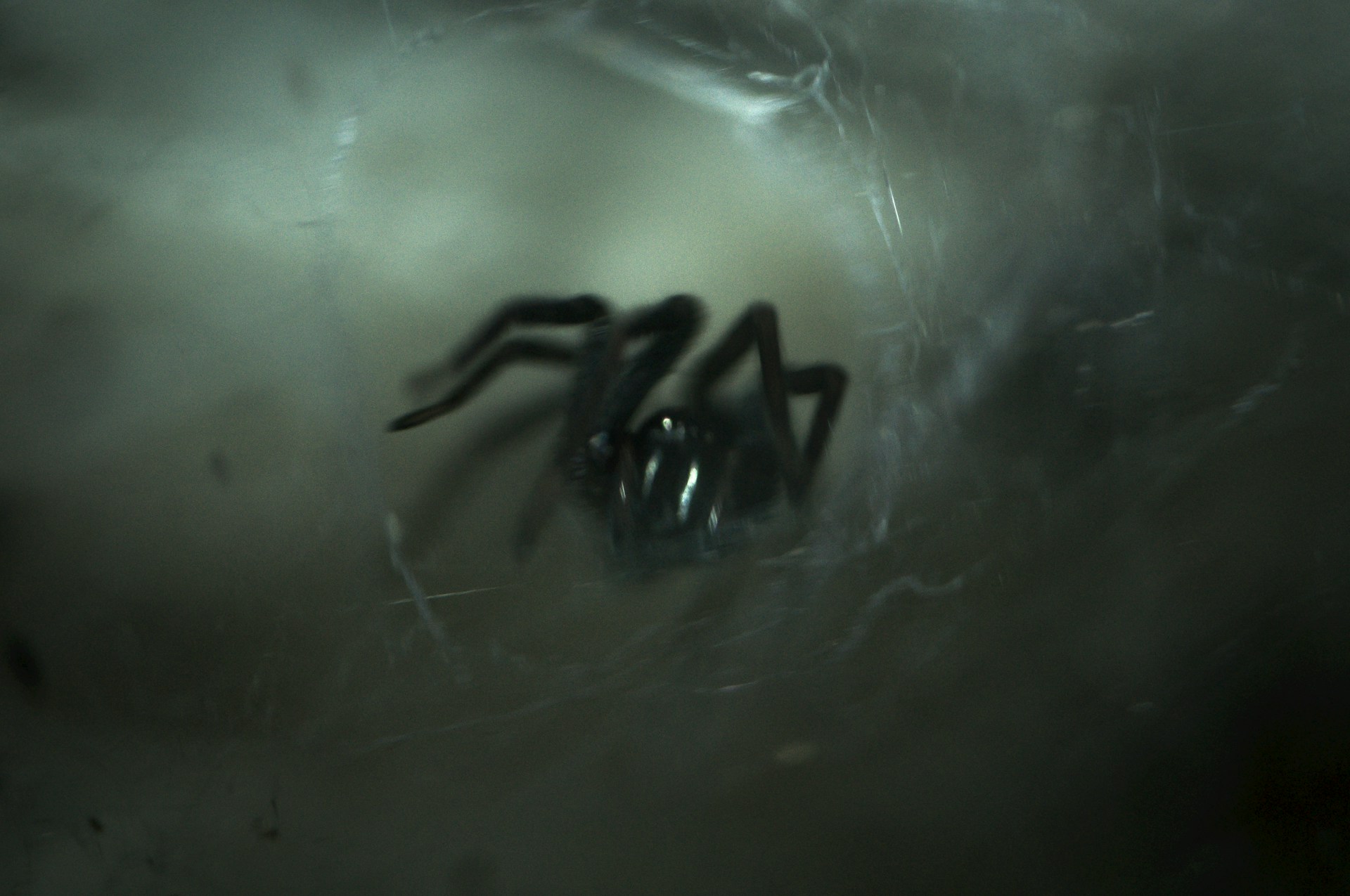Iowa, nestled in the Midwest, stands out for its unique fauna and flora, and among its diverse wildlife, spiders in Iowa hold a particular intrigue. Beyond being the birthplace of sliced bread and adorned with expansive cornfields, the state harbors over forty species of spiders. As you explore Iowa’s different regions, encounters with harmless yet fascinating species like giant wolf spiders and jumping spiders are inevitable, alongside a need for caution around potentially dangerous ones, such as the infamous black widow spider.
Further reading: Dangerous animals in Iowa
In this captivating state, the arachnid population adds an extra layer of wonder to the rich tapestry of Iowa’s natural wonders.
Table of Contents
Cellar Spider
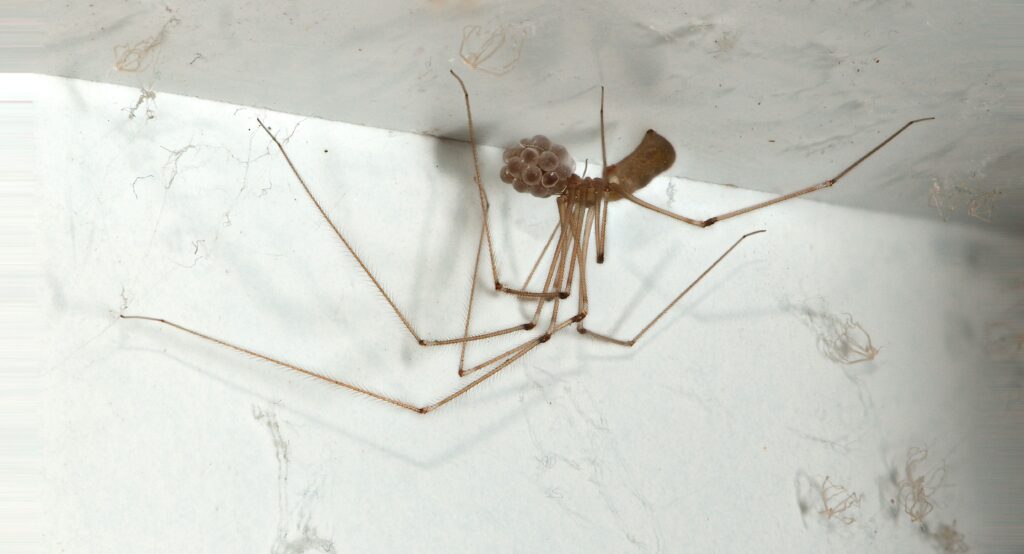
The cellar spider, commonly found throughout various locations in Iowa, can grow up to 51 millimeters in size, with males typically smaller. Shaped like a peanut, these spiders have eyes, unlike some common spider species which have six. Using intricate webs to ensnare prey, they capture and consume victims drawn in by the vibrations caused on their webs.
Southern Black Widow
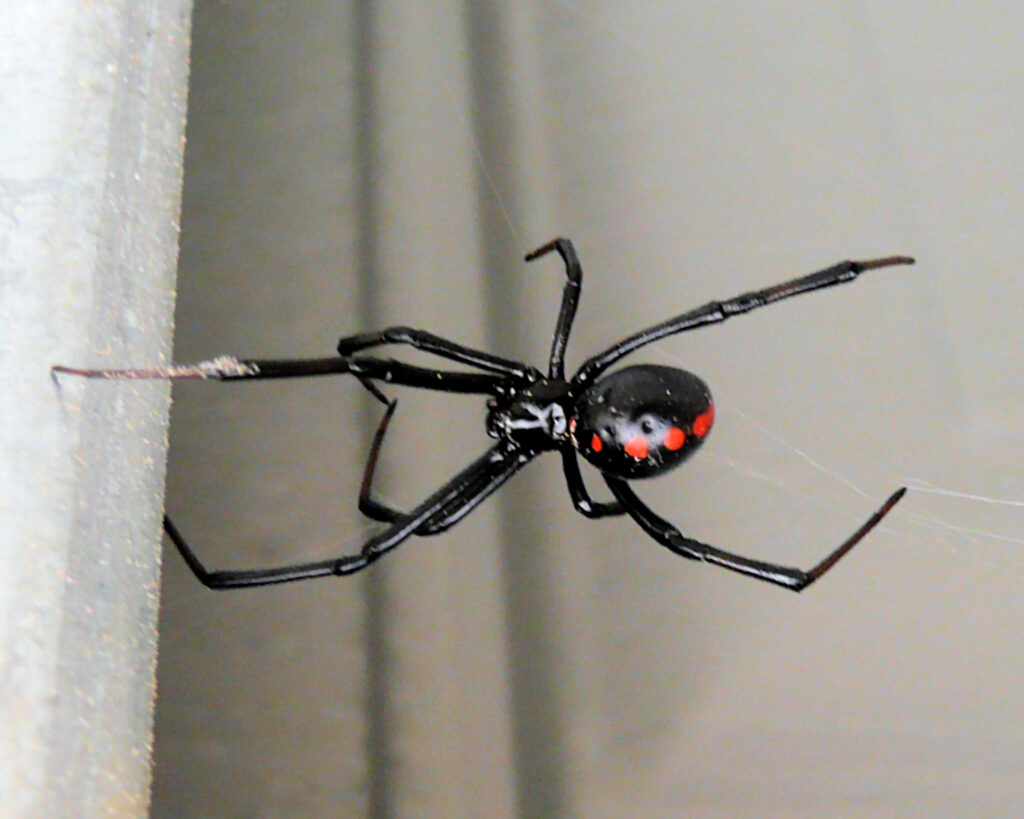
In Iowa, the southern black widow poses a significant threat among the spiders in that state. Growing up to 13 millimeters in length, females display a black body with a distinctive red hourglass shape on their abdomen, while males may appear greyish-black. These spiders, known for their large size and potent venom, can cause severe symptoms including excruciating muscle aches, difficulty breathing, nausea, and vomiting upon biting.
Woodland Jumping Spider
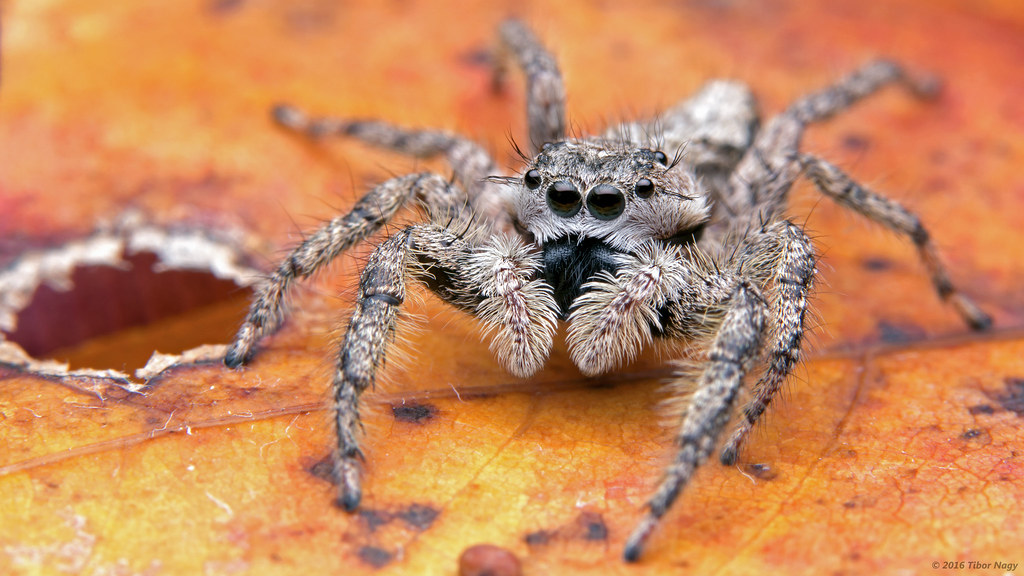
Thriving across Iowa, the woodland jumping spiders are among the most energetic and remarkable species. With glossy black carapaces adorned with a central white dot and two red wave lines encircling their eyes, these spiders possess exceptional hunting abilities, leaping long distances to capture prey with precision. While their bites are typically mild on humans due to their smaller size, caution is advised when encountering them.
Common House Spider
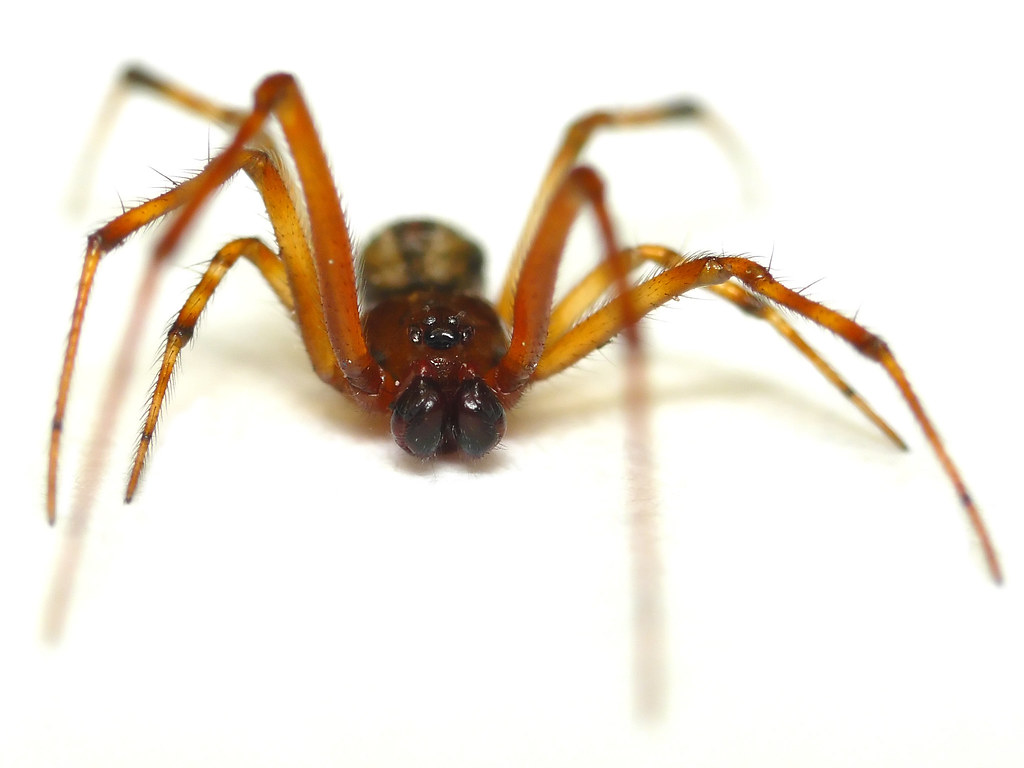
As their name suggests, the common house spider is prevalent in residential areas across Iowa, with females reaching up to 6 millimeters in length and males slightly smaller. Often mistaken for black widows due to their appearance, these spiders construct cobwebs to capture and consume various pests like ants, mosquitoes, and flies, offering benefits in household settings.
Tuft-legged Orb-weaver
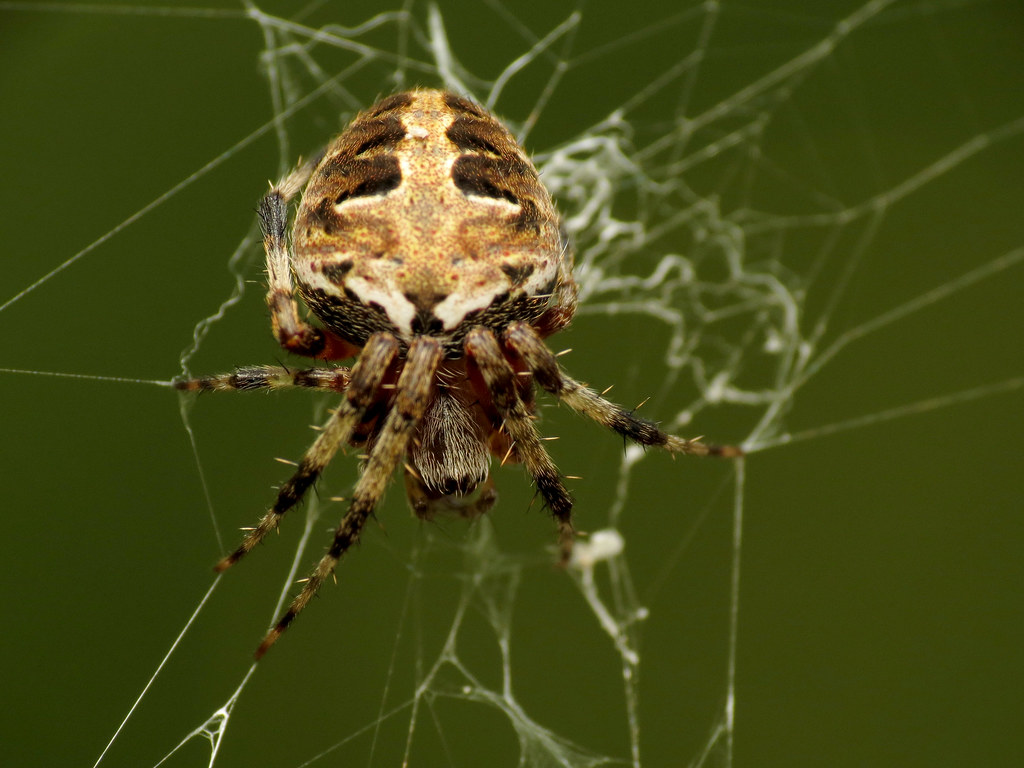
In Iowa’s woodlands and forests, the tuft-legged orb-weaver is ubiquitous. Growing to varying sizes, with females typically larger, these spiders feature mottled brown bodies adorned with long, spiky hair, blending seamlessly into their surroundings. Their fine, tightly woven webs efficiently trap small insects, although their bites on humans are generally minor due to their small size.
Dark Fishing Spider
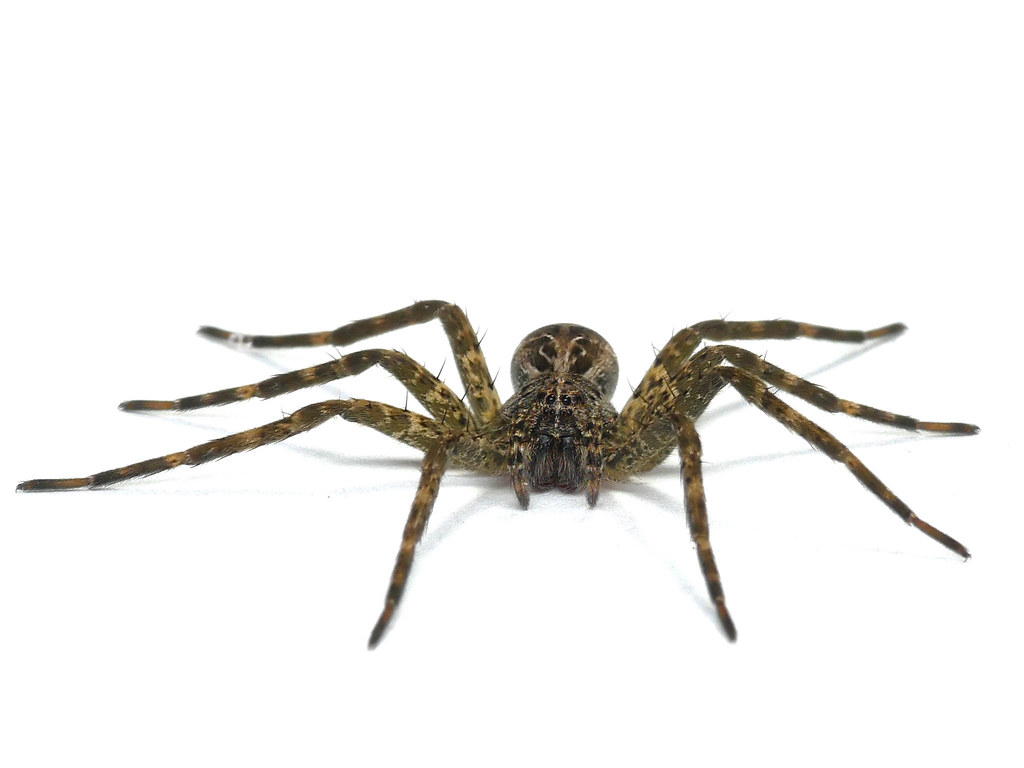
The dark fishing spider, thriving in various Iowa habitats, exhibits remarkable speed on water surfaces, capturing prey like insects, fish, and tadpoles. Equipped with an inflatable organ for diving and floating, these spiders belong to the nursery web spider family, prevalent in the eastern United States and parts of Canada. Despite their larger size, reaching up to 25 centimeters for females and slightly shorter for males, dark fishing spiders are generally harmless. Sporting colors like brown, tan, and grey, with dark spots on their spines and distinct W-shaped markings, these adept runners can hunt both land and water creatures.
Carolina Wolf Spider

The Carolina wolf spider, one of the largest spiders in Iowa, thrives across the state with females growing up to 35 millimeters and males up to 20 millimeters. Sporting light brown, dark brown, and tan hues with orange coloration on their sides, these spiders have reflective eyes that glow at night. Active during the night, Carolina wolf spiders create burrows for ambushing prey, showcasing their formidable nature.
Giant Lichen Orb Weaver
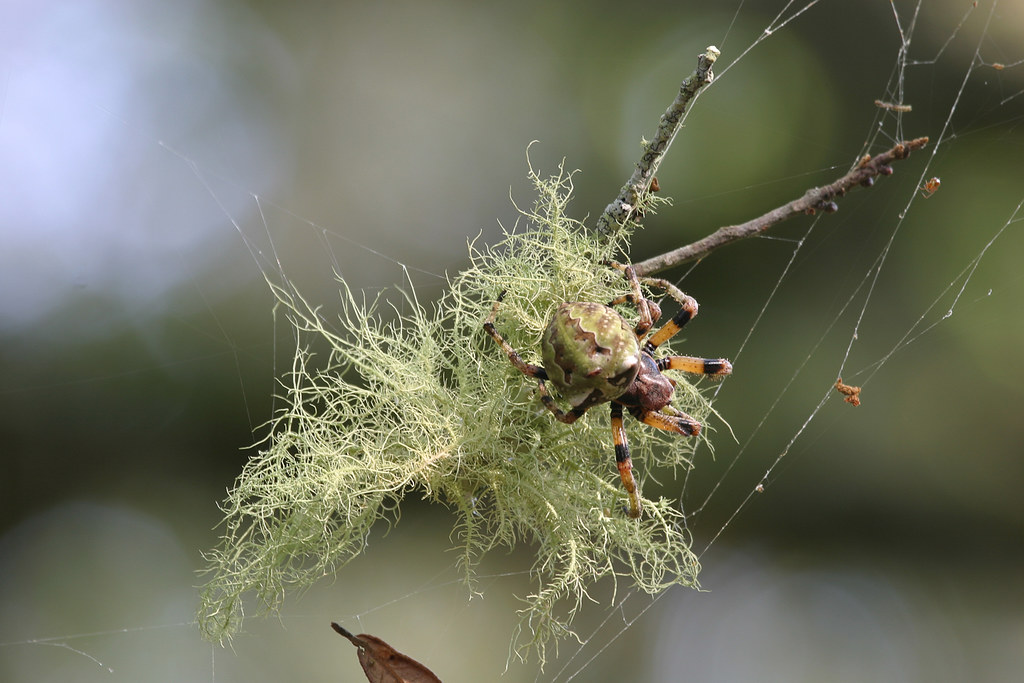
In Iowa, the giant lichen orb weaver, found in various locations, features adult females growing up to 24 millimeters, surpassing their male counterparts in size. With orange legs, a greyish-green abdomen adorned with white and black markings, these spiders construct large webs for prey capture. Active primarily at night, giant lichen orb weavers pose no threat to humans due to their small size.
Black and Yellow Garden Spider
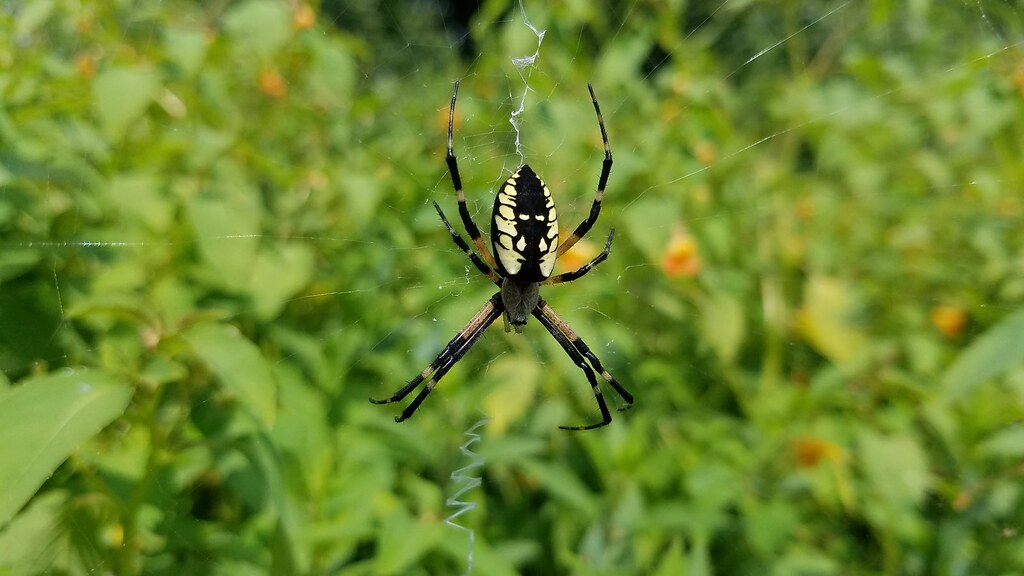
The black and yellow garden spider is another prevalent species in Iowa, creating zigzag-shaped webs in various habitats. Reaching up to 28 millimeters for females and 9 millimeters for males, these spiders get their name from their distinct coloration. Whitish-silver carapaces and non-aggressive behavior characterize them, but interfering with their habitat may lead to bites and potential bacterial infections.
Barn Funnel Weaver
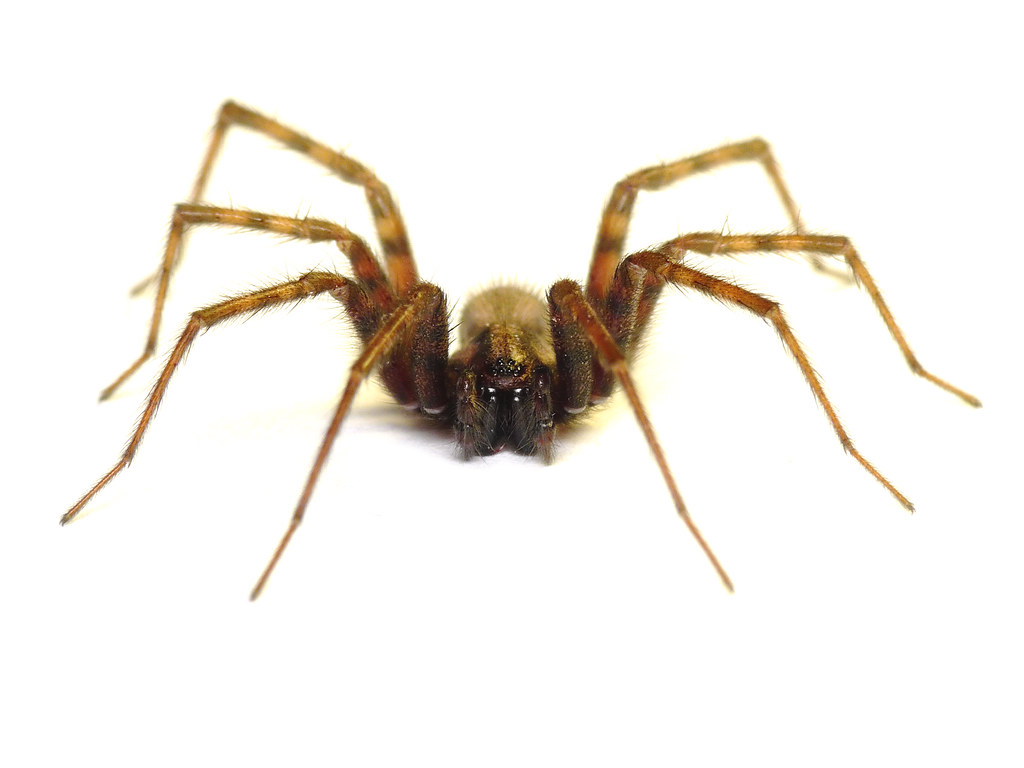
Found in farmlands and barns, the barn funnel weaver spider, belonging to the funnel web spider family, is a common presence in Iowa. With adult females growing up to 11 millimeters and males up to 9 millimeters, these spiders display long bodies and straight abdomens. Sporting colors like grey, brown, and light brown, barn funnel weavers use webs for prey capture, and while generally non-aggressive, it’s advisable not to interfere with their habitat to avoid potential bites.
___________
Here are some more spiders from other states in the US:

